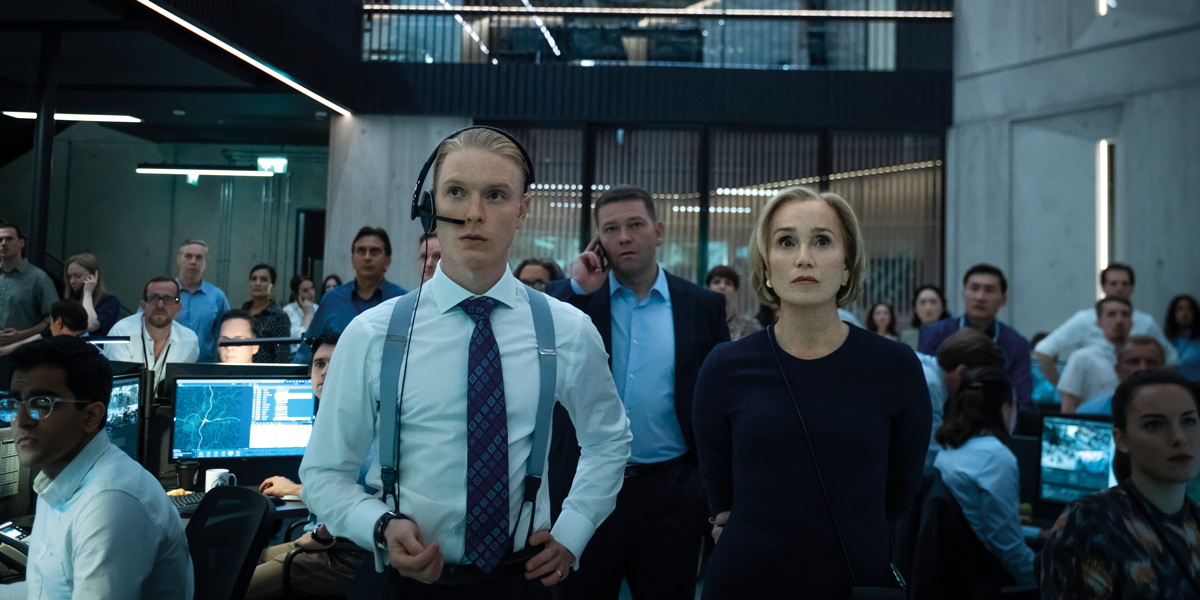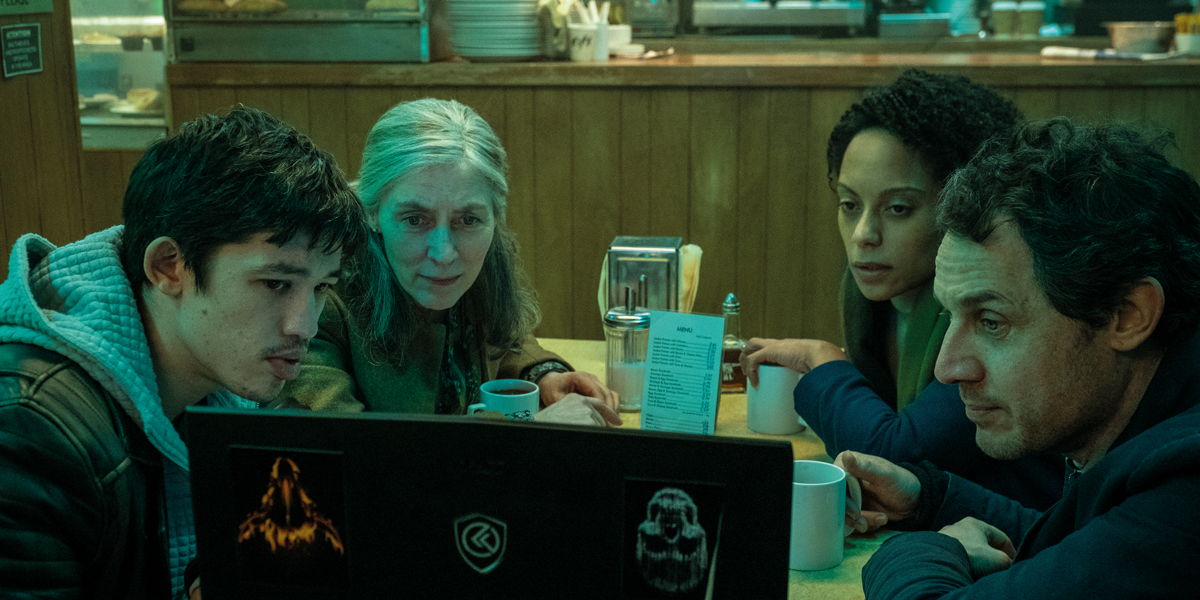
Spy games in Slow Horses
Posted on Jul 27, 2022 by Samara Husbands
Oscar-winning actor Gary Oldman’s first TV lead role sees a British espionage drama with a difference – the spies are rubbish. Cinematographer Danny Cohen delights in this London-centric thriller-comedy
Words. Julian Mitchell | Images. Apple TV+
Slow Horses is an Apple TV+ production, so compared to other streaming services, it has an extra measure of ‘gleam’ to it. The show’s cinematographer Danny Cohen points to a primary reason for that: the streamer is investing heavily in its fledgling service. This, of course, means buying the show in the first place, but also upping the data rate from its broadcast servers to elevate the viewing experience.
London-born Cohen is obviously proud of the production, as it drips with the capital’s cool and even has Mick Jagger composing and singing the title track. The Rolling Stone is a fan of the original books by Mick Herron and was so keen to be involved, he turned the song around in a couple of days.
The production revels in the colour and tone of the seventies and eighties espionage genre, but never has a spy story picked over the deficiencies of its spooks so much. At its heart, the story is a fast-moving thriller, but it originates from a despondent place with some great twists.
A Contorted Smiley
‘Slow horses’ is the name MI5 gives to the headquarters and residents of a downtrodden department of failed spies, misfits, malcontents and loafers. They inhabit Slough House, a nondescript north London address with a back entrance and grimy office interior. Their boss Jackson Lamb, played by Gary Oldman, is also past his prime, but delights in making his miserable crew even more downbeat – to the point where they demand P45s and leave. In fact, that’s his brief… get rid of the slow horses.
Oldman is almost like a twisted version of his George Smiley in Tinker Tailor Soldier Spy – browbeaten, toxic and absorbed by revenge and malice; it’s a great performance. As Cohen remarked, “Why wouldn’t you refer to that role as a conscious decision?”
Mick Herron’s books were rich pickings for the adapter Will Smith, director James Hawes, production designer Tom Burton and Cohen. The characters and scenarios were lifted from the page and set free in a production that was almost instantly awarded a second series – and then a third and fourth soon after. There are plenty of books to keep them going.

Slough House
For Cohen, who was prepping Season 3 when we talked with him, it was initially a matter of finding the right look for Slough House. Its suffocating and grimy office spaces set against the splendour of MI5’s slick and shiny fortress. The production had also been able to build out Slough House and the MI5 HQ, maximising the oppressive nature of one against the professionalism of the other. It’s a weird kind of Upstairs, Downstairs arrangement.
“Having the build, we could design the shoot to really flow. The fun of it is, you can do interesting things that would be difficult in a real location.” Cohen had plenty of previous spies to reference, including Michael Caine’s Harry Palmer films, which also accentuated a bleached and low-contrast look. But he was to hark back to one of cinematographer Sir Roger Deakins’ first films, made in 1986: Defence of the Realm. In it, a journalist exposes a Member of Parliament as a spy.
“It has an amazing sense of place, set around Fleet Street and Whitehall. It’s very specific, which I tried to translate to Slow Horses. There’s a ton of spy movies like The Third Man, The Spy Who Came in from the Cold; they’ve all got something, you just need to mash them together. It needs to be logically done to work for Slow Horses, however.”
On location – and on-set as much as he could – Cohen used practicals to light scenes, especially in Slough House, which always had to have this sparse, ‘sticky carpet’ vibe. Aesthetically, he was searching for a naturalistic feel as an initial instinct, to control and shape the look organically. “That was a big part of what I was up to. Director James Hawes wanted to deliver something that people hadn’t seen before within this upside-down spy genre.”

Duck and cover
If you haven’t read the Herron books or seen the show, you won’t know about the added element: comedy value. This is a typically British depreciation of others, which is the bed the plot lies in. It’s inherent in the way the narrative is driven and brings a dark humour to scenes. But violent action is often only around the corner.
Cohen needed to reflect this, bringing in three Arri Alexa Mini LF cameras to cover the ensemble’s banter. And lenses were from Panavision. “There were always two cameras, because you want to cover more than one person in every take. We used three as much as possible. It’s all about coverage, as you don’t want the actors to repeat it and repeat it. You need to try and reduce the number of takes by increasing the number of cameras. It’s the way to go.
“There’s inevitably a compromise with lighting, as with a single camera you can shape it a lot more. If you go multicam, some shots might not look that pretty, but you strike a balance. You get an immediacy with the acting by getting the coverage.”
Cohen’s camera sits on characters’ shoulders, spending time with them as they go about their duplicitous tasks. He also utilises a surveillance style of shot, gladly spying on proceedings. The camera snoops on people through doorways and broken frames, as Cohen’s stills training comes to the fore.
“That’s all about the nature of spy films and to keep the tension flowing. One of the things James Hawes wanted was to always feel like the camera was alive. Even on static scenes, it is always doing something, even if it’s just a bit of movement. It could never be dull to look at – a little bit of dynamism gives the image life. It has an unsettling feeling, creating an impression something is about to happen.
“You don’t want to overdo it, you have to be subtle. Too much will get noticed and it may become a hindrance.”

Not a Bond movie
The first season starts with the reason why main character River Cartwright, played by Jack Lowden, is exiled to Slough House – the scene of his huge mistake and transformation into a slow horse. To stage this, the production was lucky enough to hire a terminal at London’s Stansted Airport. This was in the middle of lockdown, so it wasn’t doing anything at the time.
Cohen explains how they took advantage of the opportunity. “Stansted said that if we turned up, they would give us access. We had about five days to shoot it and, as the whole terminal had been mothballed, we moved in. Weirdly, it gave us a lot of freedom we wouldn’t normally have. On a regular day, they have 90,000 people going through there.
“It did have its difficulties, as everybody had to be tested for us to operate in a Covid-safe way. But the way we shot was in a typically thriller style – you’re going 90 miles an hour and are suddenly put into reverse. You set it up to be a successful chase and then don’t deliver, which is the tone of the show; it’s not a Bond movie, even though it starts out just like one.”
The Stansted shoot purposefully paralleled a famous scene in Casino Royale, placing the viewer in familiar territory: good spies overcoming bad with a frenetic chase. The way Slow Horses subverts that from the beginning seals the flavour of the show. River’s failure is a recurring theme, but his redemption slowly overshadows it.
Season 2 of Slow Horses will stream this year, with Seasons 3 and 4 expected in 2023
Originally published in the August 2022 issue of Definition.








